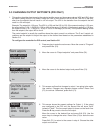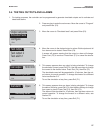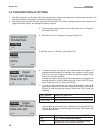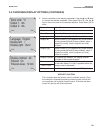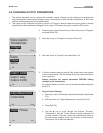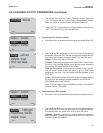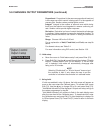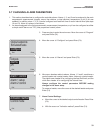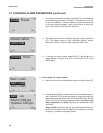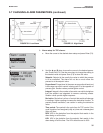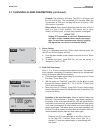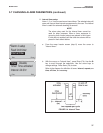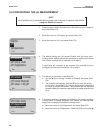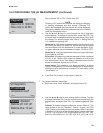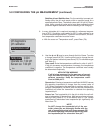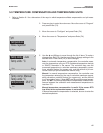
34
MODEL 54eA SECTION 5.0
SOFTWARE CONFIGURATION
5.7 CHANGING ALARM PARAMETERS (continued)
c. To change the activation method, press Edit (F4). Use the é key
to scroll through the choices: "Process", "Temperature", and “pH”
(if pH was enabled). "Process" means the measurement made
by the main sensor (oxygen, ozone, free chlorine, or total chlo-
rine). Press Save (F4) to store the selection.
d. The display returns to the "Activate: Process" screen. Press Exit
(F1). The display returns to the "Activation method" screen.
Move the cursor to "Control mode" and press Enter (F4).
e. To change the control mode, press Edit (F4). Use the é key to
toggle between "Normal" and "TPC". Press Save (F4) to store
the selection.
8. Alarm setup for normal alarms:
a. Move the cursor to the desired alarm setup and press Enter (F4).
b. Use the é and ê keys to move the cursor to the desired param-
eter. Press Edit (F4). Use the arrow keys to change the setting to
the desired value and press Save (F4) to store the value. See the
Figures 5-2 and 5-3 for an explanation of terms: low alarm, high
alarm, hysteresis, and delay. See Table 5-1 for allowed values
and limits.
Relay default determines how the relay will operate if there is a
fault or the controller is in hold. Alarms can be forced on (Close),
off (Open), or remain unchanged (None).
Activate : Process
Exit Edit
Ctrl mode : Normal
Exit Edit
Alarm : Low
Setpoint: 0.000 ppm
Hysteresis: 0.000 ppm
Exit Edit
Activation method
Control mode
Exit Enter
Alarm 1 control
Alarm 1 setup
Alarm 2 control
Exit Enter



